Eye Opening Year of 2020 – Part One: Covid-19 Catastrophe
Hi Everyone,

It has also been an eye-opening year for many people. The flaws and corruption in many political systems have not just been exposed but flaunted for everyone to see. In this two-part series, I will be reflecting on some of the eye-opening events of 2020.
In Part One, I will be focusing entirely on Covid-19. I will discuss the threat the virus has posed to society. I will discuss the response to this threat and damage this response has caused. I will discuss the new vaccines and what we know about them so far. In Part Two, I will be discussing several other disturbing events that have occurred during 2020. These events range from the push for socialism, racial tensions, rigged elections, censorship, and Brexit.
Covid-19

Much of the corruption in 2020 has occurred in the name of protecting public health. The main identified threat has been Covid-19. Covid-19 is a nasty virus with debatable origins (i.e. theories range from eating bats to being created in laboratories located in China and/or the USA). Even though Covid-19 is life threatening to some people, the threat has been hugely exaggerated. The exaggerated threat has been used to justify the implementation of some of the harshest restrictions in recent history.
Early this year, I wrote a 9-part series about Covid-19. The series focused on the possible economic and social impact of Covid-19. In the first post of the series, I identified the nature of the Covid-19 virus and the possible health risk it presents. The first wave of Covid-19 had the greatest impact on Europe and the USA. The latter part of the first wave also affected India, Mexico, and several countries in South America.
In early 2020, very little information was available about Covid-19. When information came available, it was often conflicting.
There was conflicting information about how it spread. Is the virus airborne, waterborne or both? Can it spread from contacting surfaces? How long does it remain on surfaces? Does it spread as easily outdoors? How long should we isolate, if we have identified Covid-19 symptoms?
There was conflicting information about how to slow the spread of the virus and what actions people should take. Should we wear facemasks? Should we wear facemasks outside? How far should we distance from other people outside and inside (e.g. one metre or two metres)? Should cities be locked down, partly locked down or not locked down?
There was conflicting information regarding its virulency. What percentage of people who contract the virus dies? How does this vary between different age groups? How does this vary depending on a person’s pre-existing medical conditions?
It took many months before consistent answers were provided. Even now, some inconsistencies remain.
Testing for the virus continues to be highly inaccurate. A Real Time-Polymerase Chain Reaction (RT-PCR) test is being used to diagnose SARS-CoV-2, the cause of COVID-19. The PCR test does not detect the virus; instead, it detects genes in the virus. A test provides a positive result if sufficient number of these genes are detected. The test has been found to be oversensitive (i.e. high cycle threshold). It detects gene fragments from old infections that no longer pose any danger. The PCR test offers more value if it is used to support the patient’s clinical condition (symptoms and signs) (Pascal Sacré 2020 and World Health Organisation).
Many countries are conducting mass testing. Mass testing exaggerates the problems of the PCR test. There is also a direct correlation between number of tests and number of reported cases. The increasing number of cases are just as likely to be due to the increasing number of tests as they are from an actual increase in number of infections. The number of deaths from Covid-19 are also likely to be unreliable, as deaths are recorded differently in different countries. Some countries include the deaths of anyone who tested positive for Covid-19, when the person’s main cause of death was most likely something else.
A more reliable method of assessing the impact of Covid-19 on loss of life would be through the number of excess deaths. Figure 1 compares the number of deaths in each month of 2020 with the average number of deaths from the previous five years (i.e. 2015-2019).
Figure 1: Excess Deaths of countries with both high and low number of reported Covid-19 deaths
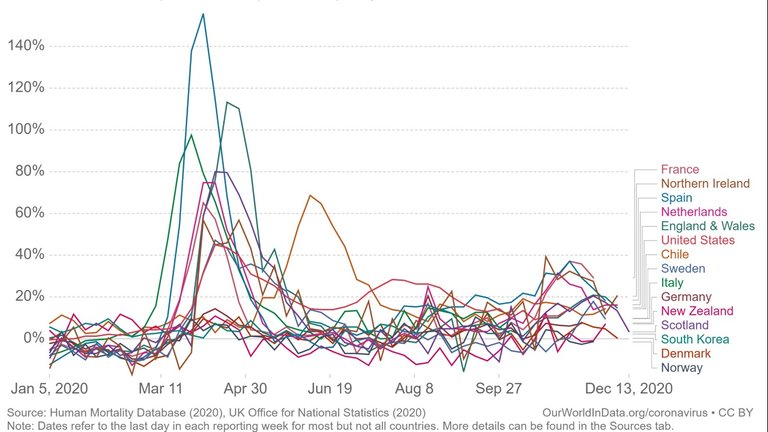
Source: Our World in Data
Note: Highest number of excess deaths in one-week of countries most heavily affected by Covid-19: Spain (156%), Italy (98%), France (65%), England and Wales (113%), Netherlands (75%), Scotland (80%), Northern Ireland (57%), USA (45%) and Chile (69%).
The data indicates that excess deaths spiked for many of the countries with the most number of Covid-19 deaths in April 2020. The number of excess deaths for Chile spiked in June. This is consistent with the first wave reaching South America in June and July. Since the first wave, excess deaths has consistently remained below a 20% increase for even the worst hit countries. For several countries, excess deaths were negative for many weeks of the year.
Excess deaths is still not a completely reliable method of determining loss of life from Covid-19. Excess deaths does not consider population growth or population trends such as increasing elderly population. It also does not consider loss of life from the restrictions put in place to reduce the spread of the virus. Figure 2 contains the annual crude death rates for several of the countries with the highest excess deaths presented in Figure 1.
Figure 2: Annual Death Rates (2000 to 2020)
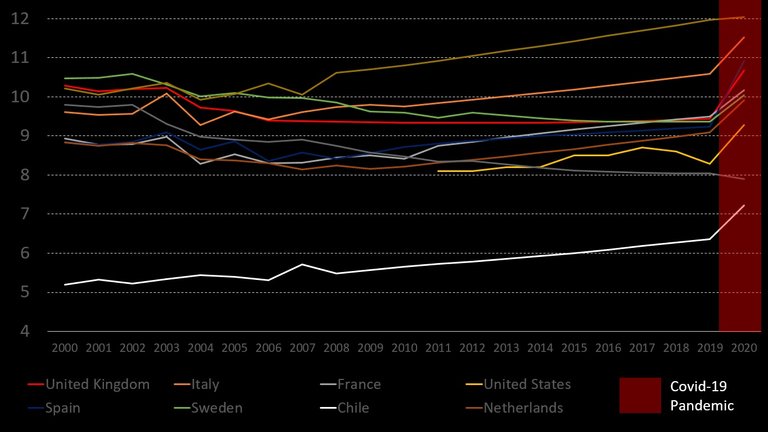
Source: Index Mundi and Our World in Data
Note 1: 2020 figures have been calculated based on the percentage change in raw deaths from each country.
Note 2: the remaining few weeks of 2020 have been extrapolated based on the recorded data for 2020. For most countries this is a small adjustment for the month of December.
Figure 3 contains the percentage change in annual death rate as well as the predicted percentage change based on existing trends.
Figure 3: Percentage change in annual death rate from 2019 to 2020
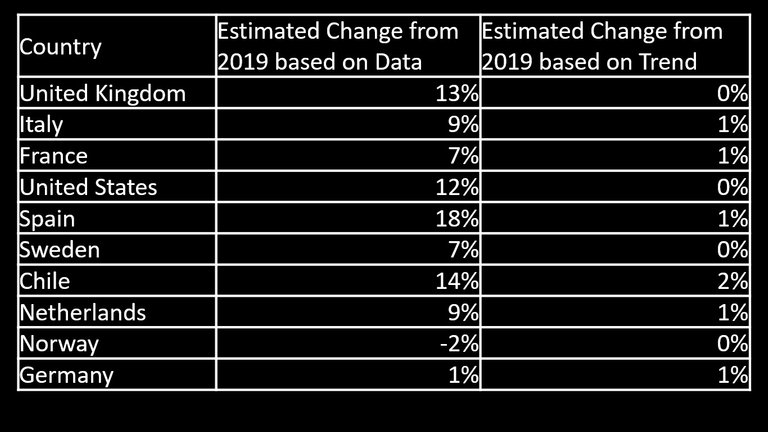
The annual death rates for most countries with higher Covid-19 deaths did not deviate by a large percentage from current trends (i.e. most percentage increases were less than 10% higher than the trend). The annual death rates for the European countries were steadily climbing each year. This is likely because of the relative high proportion of older people living in these countries. Figure 4 contains population distributions by age for France, Spain, Italy, and the United Kingdom.
Figure 4: Population Pyramid

Source: Central Intelligence Agency
Covid-19 is considerably more life threatening to elderly people. Figures 5 and 6 contain the estimated Case Fatality Ratio (CFR) and Infection Fatality Ratio (IFR) by age based on data collected from China and Switzerland. CFR is the ratio of the number of fatalities to identified cases and IFR is the ratio of the number of fatalities to number of infections.
Figure 5: CFR and IFR by age based on data from China
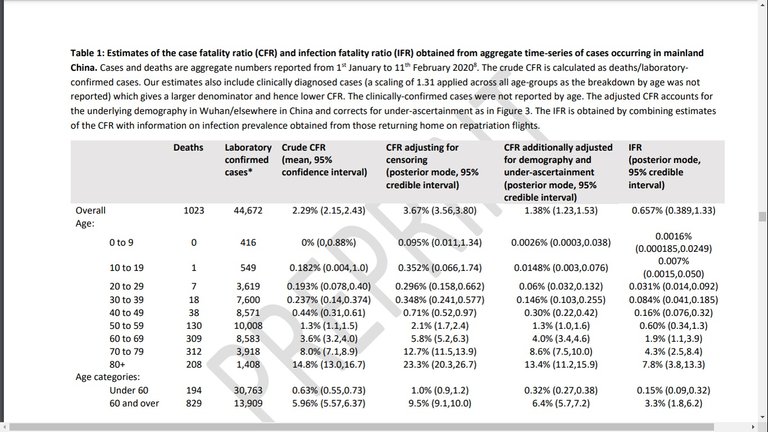
Source: Robert Verity et al 2020
Figure 6: IFR by age based on data from Switzerland
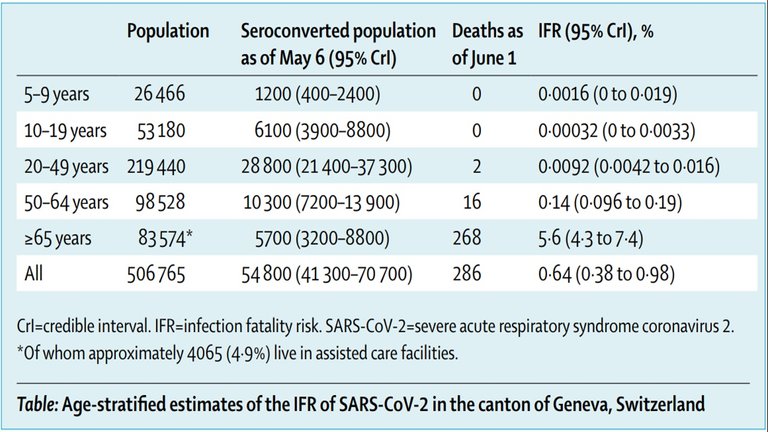
Source: Serology-informed estimates of SARS-CoV-2 infection fatality risk in Geneva, Switzerland
Note 1: the figures contain a range for CFR and IFR. These figures will not be precise as exact data regarding the exact number of fatalities and infections is unknown. The IFR has a larger margin of error as many infections are likely to be undiagnosed or asymptomatic.
Note 2: data collected from China was from before March 2020 and data collected from Switzerland was from before June 2020.
The data from both these countries strongly indicates that the risk from dying from the Covid-19 increases significantly above the ages of 60, 70, and 80. In depth modelling indicates that people with pre-existing medical conditions are at a far higher risk than people who have no existing medical conditions. Figure 7 contains the results of modelling conducted by (Global ABM).
Figure 7: Covid-19 deaths modelled by age and co-morbidities

Source: Global ABM
It is possible that many of the people who died in the first wave would have died within the same calendar year. This would explain why the annual death rate of most countries with the highest number of recorded Covid-19 deaths did not strongly deviate from their existing trends.
Several countries with higher recorded Covid-19 deaths do not have an ageing population nor an upward trending death rate; did these countries now experience a change in their death rate trend? Unfortunately, we cannot attempt to answer this question yet, as data for the number of deaths for 2020 is currently not accessible for these countries.
Restrictions
Most countries have responded to Covid-19 with restrictions. These restrictions have included:
- Social distancing
- Mandatory mask wearing
- Mandatory glove wearing
- Required PCR testing
- Closure of ‘non-essential’ shops, restaurants, pubs, entertainment venues, etc.
- Restricted selling of alcohol
- Closure of schools
- Curfews
- Restricted travel (domestic and international)
- Quarantine of people exposed to others who tested positive for Covid-19
- Restriction on size of social gatherings both indoors and outdoors
Many of the above restrictions are implemented together creating an almost complete lockdown of towns and cities.
The argument for implementing the above restrictions is to protect society, slow or stop the spread of Covid-19, and prevent healthcare facilities from becoming overcrowded. In the previous section, I discussed how the reported threat of Covid-19 had been exaggerated. This exaggeration of the threat has been the main argument for the need to act against Covid-19 with restrictions. Regardless of the extent of the threat that Covid-19 poses, do the restrictions perform the role they are claimed to perform? It is impossible to provide a definitive answer at this stage. Data is unreliable, there is limited base case information for comparison, extent of compliance is difficult to determine. However, we can attempt to analyse existing Covid-19 data to assess if the restrictions are achieving claimed desired outcomes. Figure 7 contains Covid-19 data from the United Kingdom since the beginning of the pandemic.
Figure 8: UK identified Covid-19 cases, deaths and lockdown period
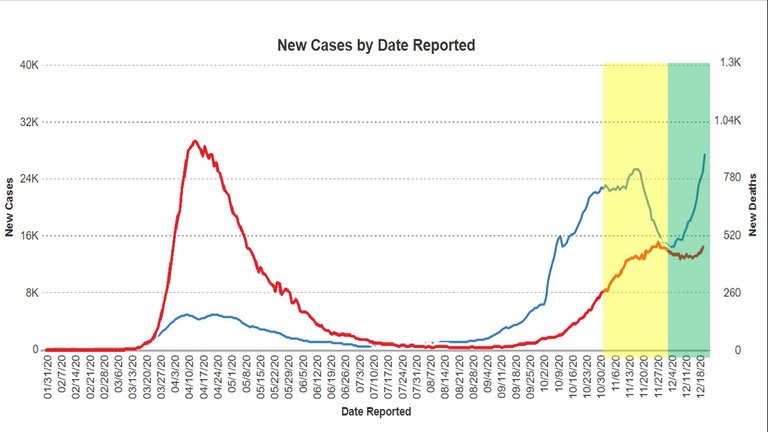
Source: Index Mundi and BBC
Note 1: the red line is the number of recorded Covid-19 deaths. It is measured using the y-axis on the right.
Note 2: the blue line is the number of recorded Covid-19 cases. It is measured using the y-axis on the left.
Note 3: The period of the lockdown is shaded in light yellow and the period following the lockdown is shaded in light green.
England was locked down for the whole month of November and the devolved nations of the UK were placed under similar lockdown conditions. During the lockdown, the number of new-recorded cases continued to rise until around mid-November and then dropped sharply for the final two-weeks of the lockdown. The number of reported Covid-19 deaths continued to rise throughout the lockdown period. This would be expected as many people dying during the lockdown would have been reported as new Covid-19 cases prior to the lockdown. In regards to the Covid-19 reported deaths, the period immediately after the lockdown would be relevant. The number of reported Covid-19 deaths dropped a little but began to climb again after about two-weeks after the lockdown. After the lockdown, the number of reported Covid-19 cases has soared. Three weeks after the lockdown ended, both reported Covid-19 cases and deaths are considerably higher. It is also important to note that during the period after the lockdown, most of the UK are still following similar restrictions as during the lockdown (Age UK).
We cannot conclude the lockdown and restrictions have not helped, as we do not know what the number of deaths would have been in the absence of restrictions. We can argue the lockdowns have failed to reduce the recorded Covid-19 cases and deaths, which was claimed to have been the desired outcome for the lockdowns.
Most reporting and focus has been placed on the number of recorded cases. For September and much of October, the number of reported cases increased sharply but the number of deaths did not. This indicates that people becoming infected were not dying. This implies that the most vulnerable (i.e. elderly with pre-exiting conditions) were not being infected. However, from mid-October until now (December 2020), the number of reported Covid-19 deaths have begun to increase at a much faster rate. It is also important to note that the corresponding increase in deaths to new cases is much closer (i.e. lag of about one week). This indicates that the most vulnerable are now becoming infected. This should be a far greater concern than increases in the number of reported cases.
Economic Impact of Covid-19 restrictions
Based on Covid-19 data from the UK, restrictions and lockdowns are not reducing the spread of Covid-19. However, restrictions and lockdowns come at a cost to the economy and society. I have collected data for national debt, quarterly nominal gross domestic product (GDP), and unemployment from various countries that have applied a varying level of restrictions. Figures 9 to 35 contains economic data for USA, UK, Italy, France, Spain, Germany, Sweden, New Zealand, and South Korea.
Figure 9: USA National Government Debt

Source: CEIC
Figure 10: USA Nominal GDP
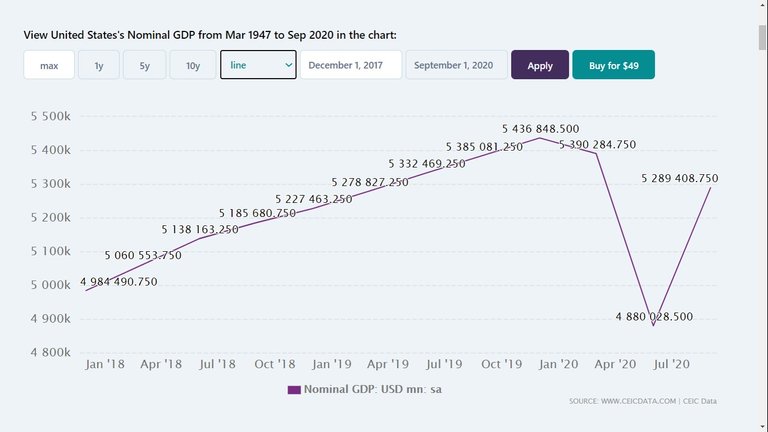
Source: CEIC
Note: nominal GDP has been used as other better indicators of national income are currently not available.
Figure 11: USA Unemployment Rate
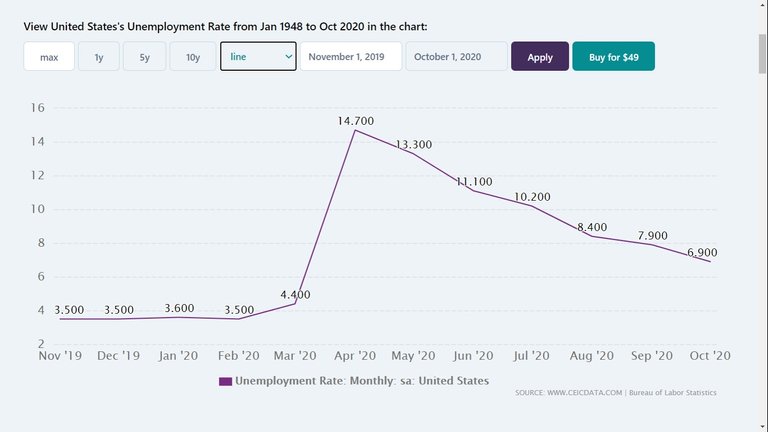
Source: CEIC
Figure 12: UK National Government Debt
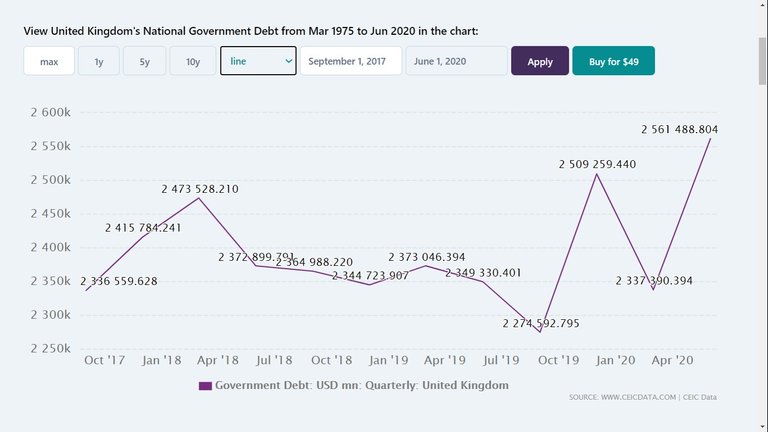
Source: CEIC
Figure 13: UK Nominal GDP
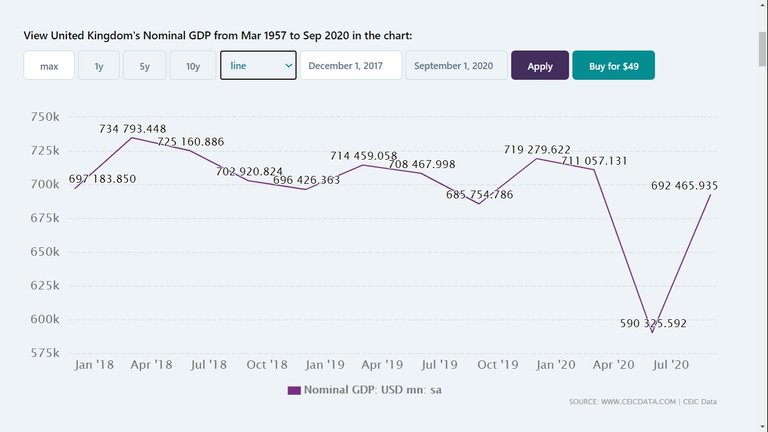
Source: CEIC
Figure 14: UK Unemployment Rate
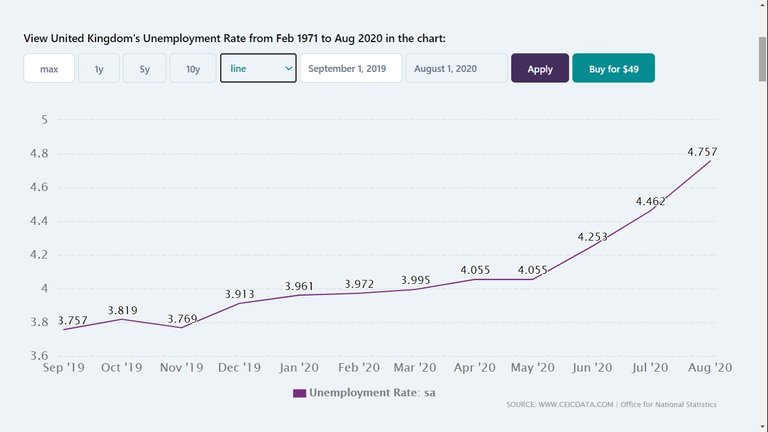
Source: CEIC
Figure 15: Italy National Government Debt
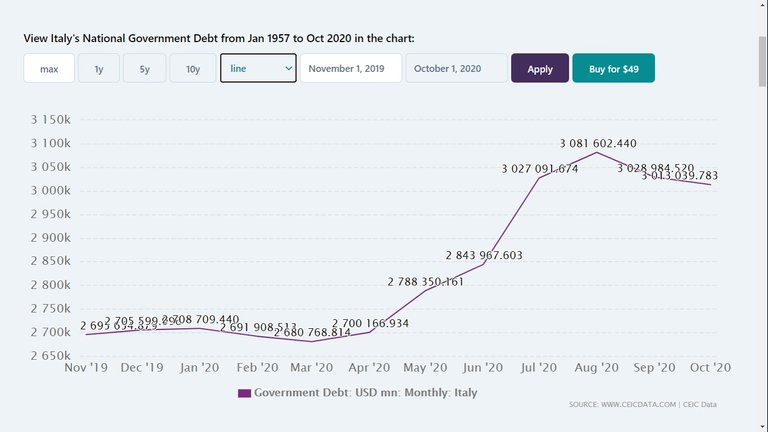
Source: CEIC
Figure 16: Italy Nominal GDP
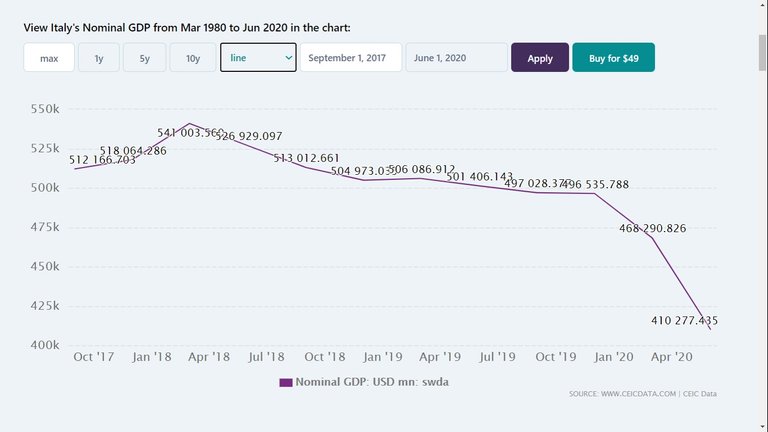
Source: CEIC
Figure 17: Italy Unemployment Rate
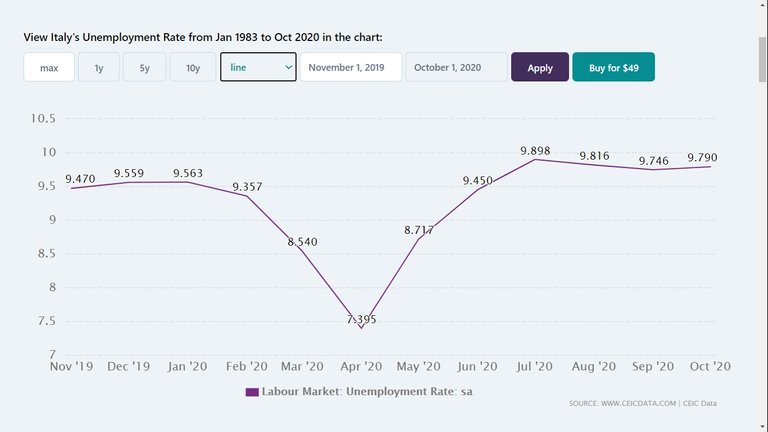
Source: CEIC
Figure 18: France National Government Debt
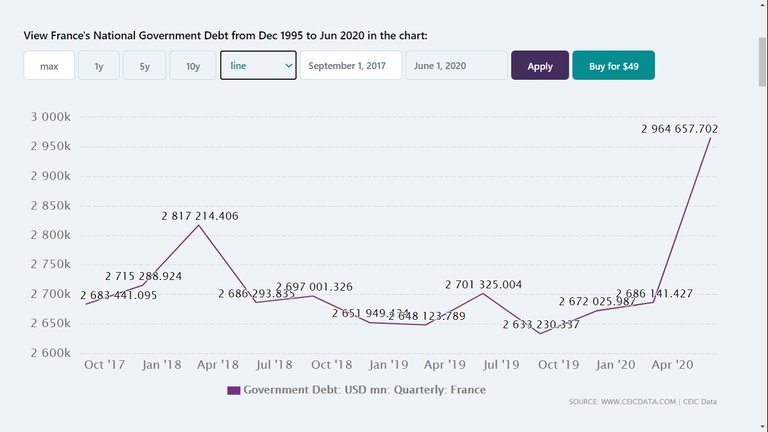
Source: CEIC
Figure 19: France Nominal GDP
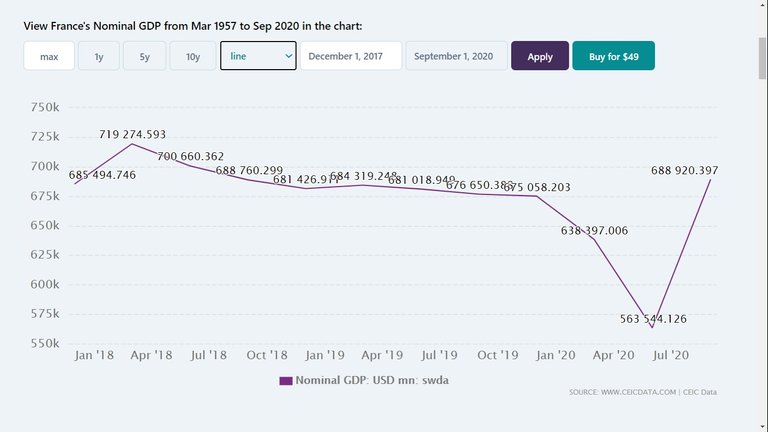
Source: CEIC
Figure 20: France Unemployment Rate
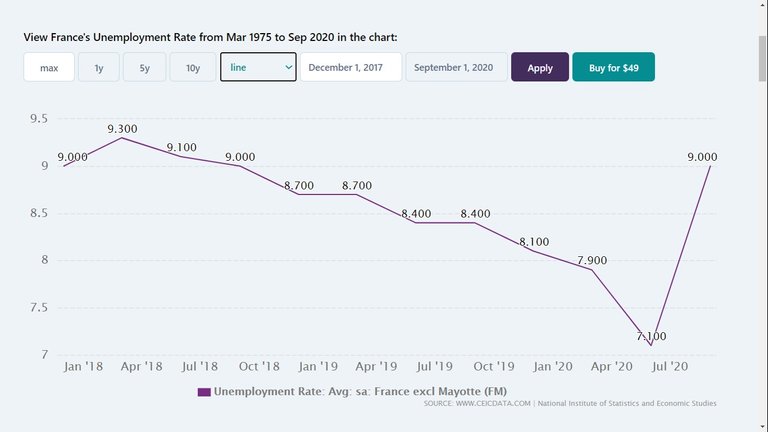
Source: CEIC
Figure 21: Spain National Government Debt

Source: CEIC
Figure 22: Spain Nominal GDP
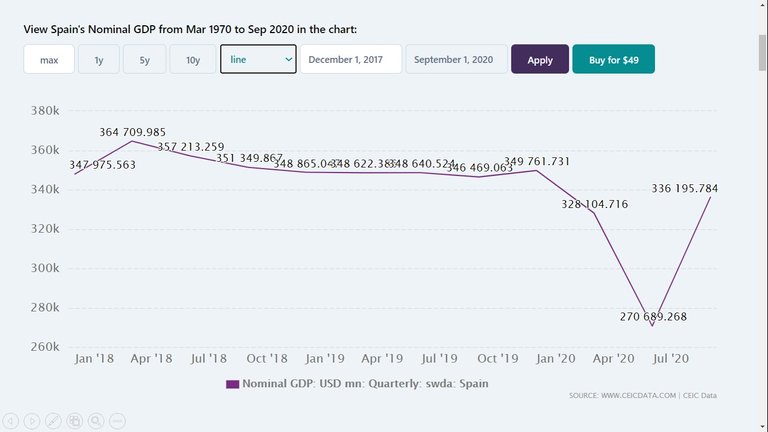
Source: CEIC
Figure 23: Spain Unemployment Rate
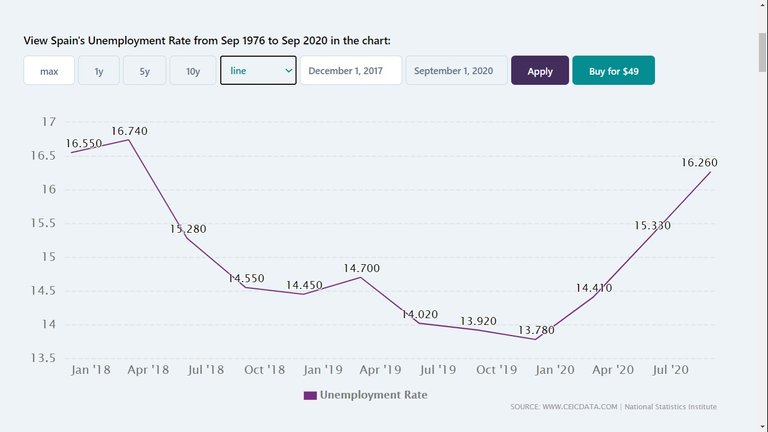
Source: CEIC
Figure 24: Germany National Government Debt
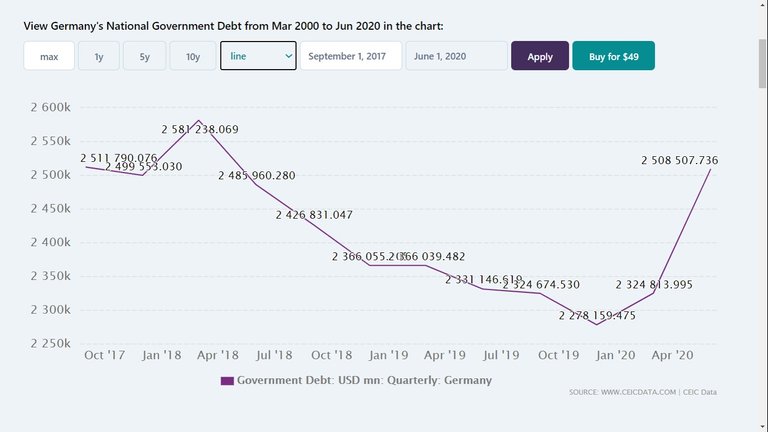
Source: CEIC
Figure 25: Germany Nominal GDP
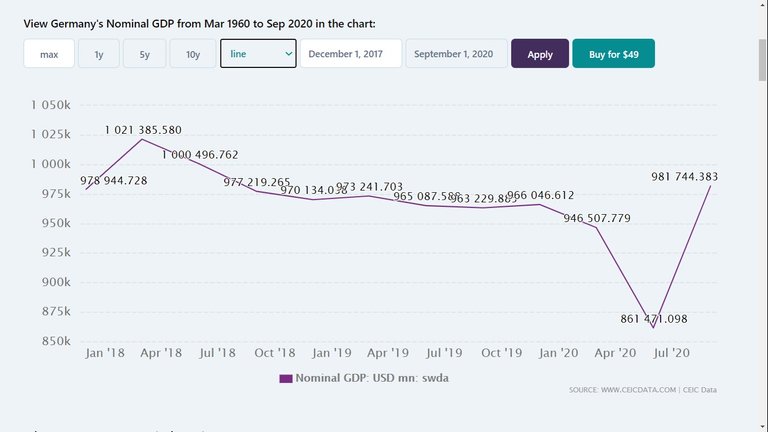
Source: CEIC
Figure 26: Germany Unemployment Rate
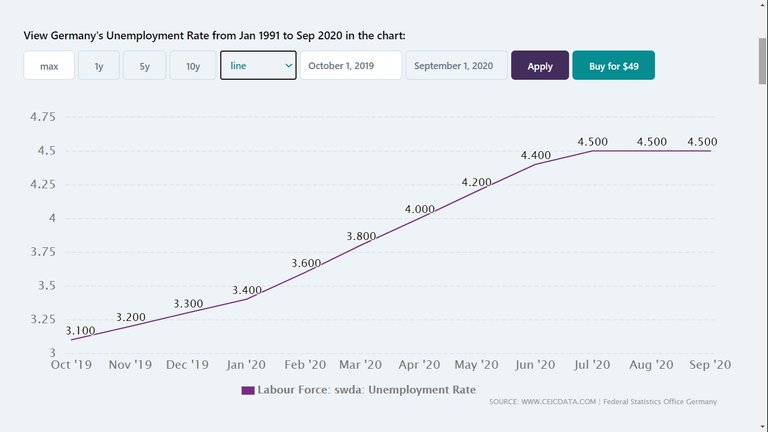
Source: CEIC
Figure 27: Sweden National Government Debt
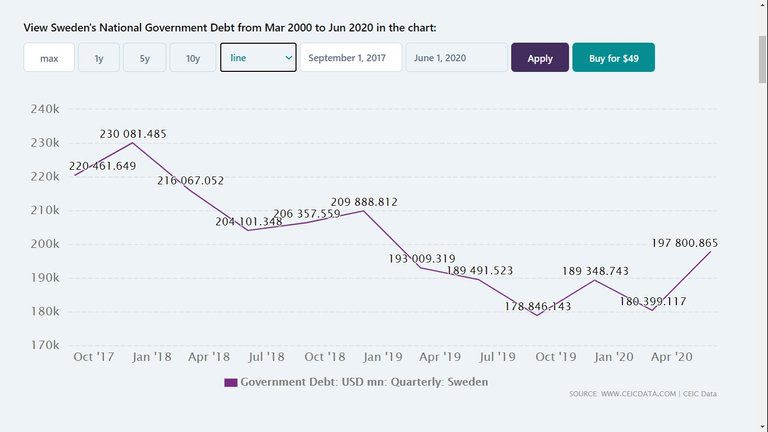
Source: CEIC
Figure 28: Sweden Nominal GDP
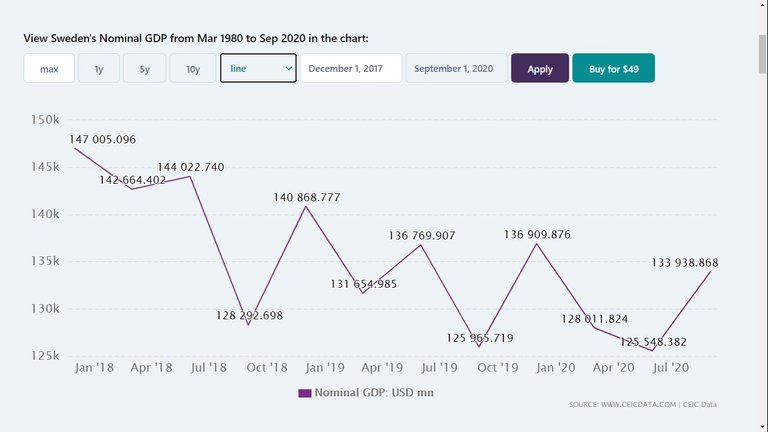
Source: CEIC
Figure 29: Sweden Unemployment Rate
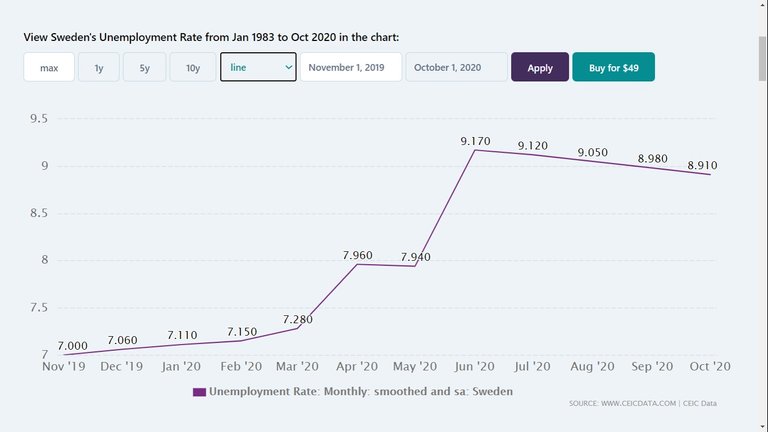
Source: CEIC
Figure 30: New Zealand National Government Debt
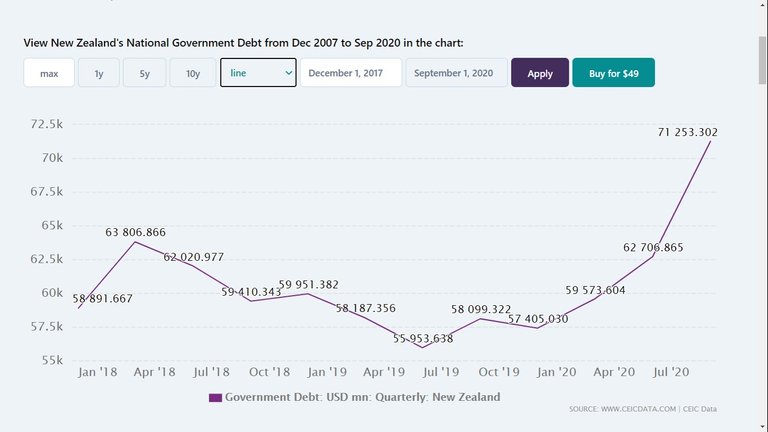
Source: CEIC
Figure 31: New Zealand Nominal GDP

Source: CEIC
Figure 32: New Zealand Unemployment Rate
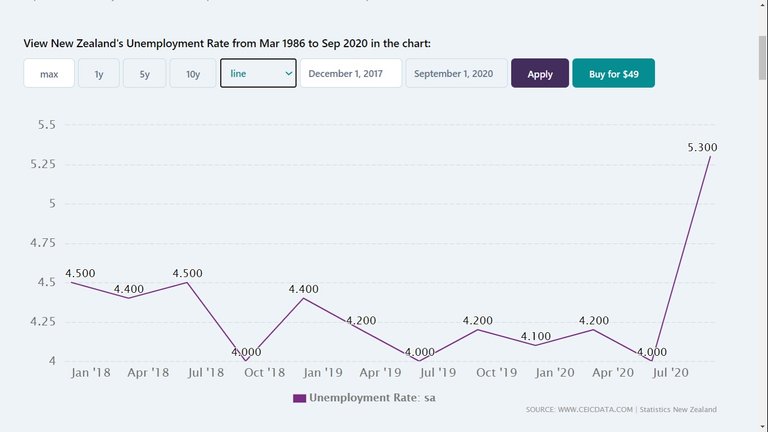
Source: CEIC
Figure 33: South Korea National Government Debt
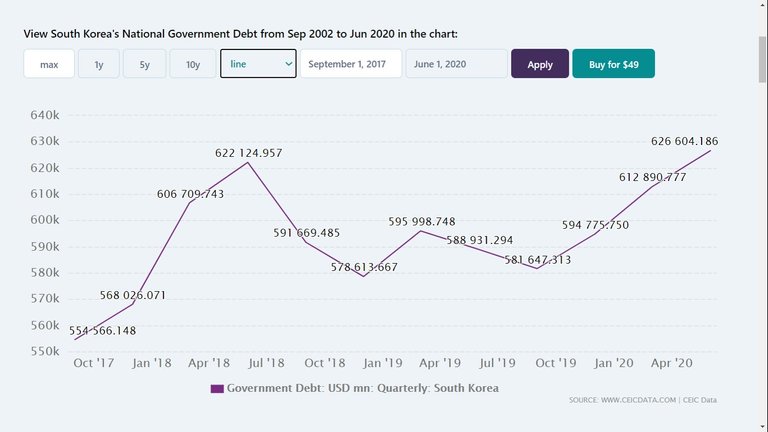
Source: CEIC
Figure 34: South Korea Nominal GDP

Source: CEIC
Figure 35: South Korea Unemployment Rate
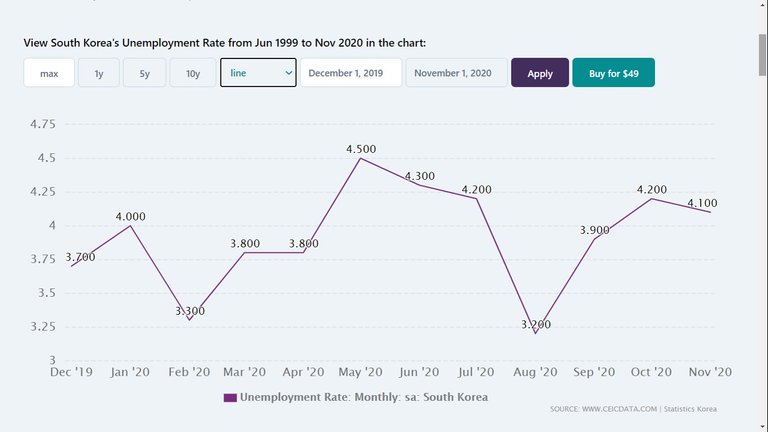
Source: CEIC
The countries that have used the most stringent restrictions have experienced rapidly rising national debt and unemployment as well as plunging nominal GDP. Even countries with minimal identified Covid-19 fatalities, such as New Zealand and South Korea, have performed badly economically. As of 21 December, New Zealand have only had 25 recorded Covid-19 deaths (worldometer) but the harsh restrictions they have applied have caused their national debt to increase by 25% in 9 months, second quarter GDP to fall by 13%, and unemployment to increase by 1.2 percentage points. Of the countries listed above,
Of the above countries described in Figures 9 to 35, Sweden’s economy was least affected during the first 6 to 9 months of 2020. Quarterly nominal GDP was slightly higher and national debt only increased by 5% in the first 6 months of 2020. However, unemployment has increased by 1.8 percentage points. Sweden has applied significantly less stringent restrictions than other countries in Europe (The BMJ).
Several of the countries that have implemented harsh restrictions are showing stronger signs of economic recovery in regards to nominal GDP than unemployment. Nominal GDP is likely to be receiving a boost from the success of the largest companies in the world. Figure 36 compares pre-pandemic profits with pandemic profits of some of the largest firms in the world.
Figure 36: Pandemic Profits of Big Business
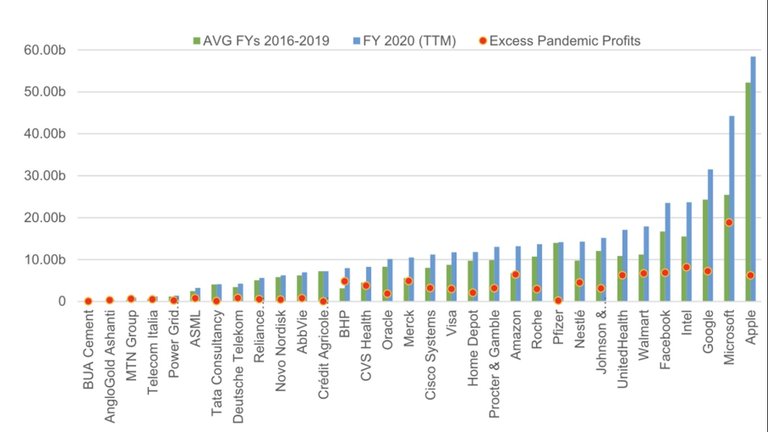
Source: Yahoo Finance
As of December 2020, all of the top 12 most profitable firms during the pandemic are ranked in the top 20 firms for largest market capital in the world (Statista).
Likewise, small businesses are beginning to close permanently. Figure 37 contains data regarding temporary and permanent closures of small businesses in the USA.
Figure 37: Temporary and permanent business closures during Covid-19 Pandemic

Source: Fortune
The permanent closure of small businesses is likely to be driving unemployment higher. It is possible that people formally working for small businesses or even owned small businesses will switch to working for large businesses. This would cause some recovery of the unemployment figures.
The higher profits for the large businesses and the permanent closure of small businesses is causing a massive transfer of wealth from the majority of the population to the richest people in the world. During the first 11 months of 2020, the wealth of US billionaires has grown by over a trillion US dollars. See Figure 38 for more information.
Figure 38: US Billionaire wealth extraction
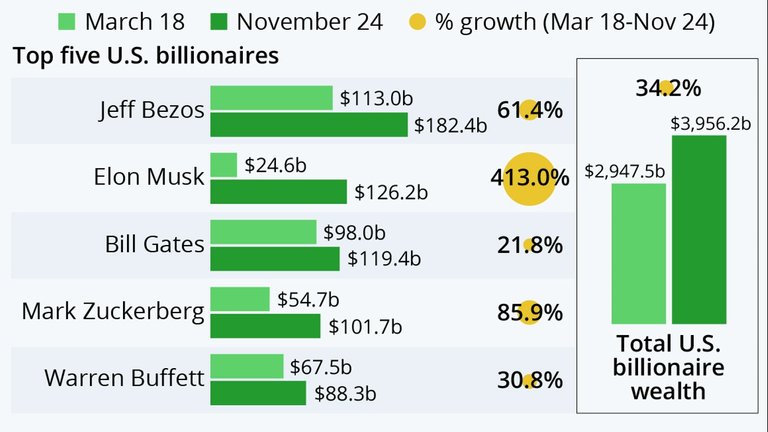
Source: Statista
Social problems relating to Covid-19 restrictions
The social problems caused by restrictions could be as serious as the above described economic problems. In my post, Covid-19 – Part 6: Expected Social Costs, I described some of the emerging social problems from the Covid-19 restrictions. The extent of the social problems being caused by the implementation of Covid-19 restrictions may not be fully apparent for several years.
New Vaccine
When Covid-19 was classified as a pandemic, pharmaceutical companies began work on a vaccination. This is a very strange first response considering how long it takes to develop a vaccine as well as the lack of success in developing vaccines for other coronaviruses. The influenza vaccine took 12 years to develop from the time it was discovered. The influenza vaccine is highly ineffective. It has been less than 50% effective since 2014 (CDC). Table 1 contains the duration of the development of a vaccine from the time the virus was discovered.
Table 1: Developing a Vaccine
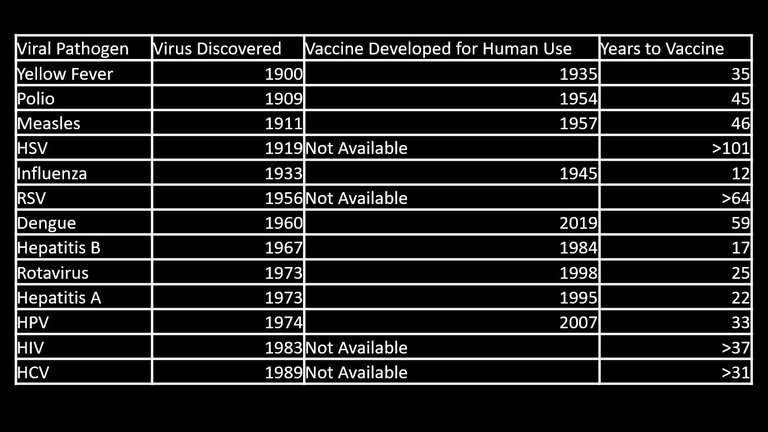
Source: Andy Biotech
A more appropriate dedicated first response would have been to develop treatments that reduce the severity of the symptoms of the virus. Some treatments offered by doctors have had some success in treating Covid-19. Dr. Vladimir (Zev) Zelenko reported success by treating Covid-19 patients with Hydroxychloroquine, Azithromycin, and Zinc Sulphate. Vitamins C and D and Selenium could also increase immunity to a virus such as Covid-19 (Dr. Eric Beeth). Improved immunity could greatly reduce the seriousness of the symptoms caused by Covid-19.
As unrealistic as it may seem, several vaccines have been developed. The Pfizer vaccine has been approved and is currently being administered in the UK and the USA. A vaccine for Covid-19 has been approved approximately one year after it was discovered. This is by far the fastest developed vaccine in history.
In my post, A closer look at vaccines, I question the effectiveness and safety of vaccines. The post revealed concerns about the side effects of several different vaccines. The Pfizer Covid-19 vaccine uses a new technology known as messenger RNA. Messenger RNA has never been used in a vaccine before. Therefore, concerns about its safety should be higher. Pfizer has been granted legal immunity from being sued by patients harmed by the vaccine (Independent); this is another reason to be concerned about its safety. In November, the Pfizer CEO Albert Bourla sold 60% of his shares in Pfizer (RT). If the vaccine is expected to be such a success, the price of Pfizer shares should continue to rise. Another area of concern is that Pfizer claims it does not know the impact their vaccine will have on fertility (Medicines and Healthcare Products Regulatory Agency).
The Pfizer vaccine has only been available a few weeks but there have been reports of severe allergic reactions to the vaccine (Children’s Health Defence). England’s National Health Service (NHS) has warned that anyone with a significant history of allergic reactions should not take the Pfizer vaccine (Children’s Health Defence). There are also concerns that the Pfizer vaccine may cause Bell’s Palsy in some people after four trial participants were diagnosed (CNBC).
Children’s Health Defence have raised several more concerns about the Covid-19 vaccines. These concerns relate to possible vaccine induced autoimmune syndromes, adverse effects from vaccines during the trials (50% of those aged 18-55 in the Pfizer trails had adverse effects), reliability of efficacy determined in the trails, and lack of evidence to prove the vaccines prevent transmission of Covid-19. The Children’s Health Defence have provided a checklist regarding transparency of information about two of the new vaccines (Pfizer and Moderna). See Table 2 for this checklist.
Table 2: Vaccine Transparency Manifesto Areas

Source: Children’s Health Defence
As can be seen from Table 2, many questions about the vaccines are still not answered.
Conclusion
Covid-19 has dominated 2020. When Covid-19 was discovered 2019 and then spread throughout the world in the first half of 2020, we had reasons to be concerned. There were so many unknowns. As the year has progressed, more information has become available. It has become apparent that Covid-19 is not as dangerous as national and world authorities had led us to believe. Only a very small percentage of the population are at serious threat from Covid-19. They are elderly people and people with serious pre-exiting medical conditions. For the rest of the population, the risk of death is just a fraction of a percentage point.
The response to Covid-19 by many Governments has been extreme. The Covid-19 measures are destroying small businesses, causing wide spread unemployment, and moving more people into poverty. At the same time, the restrictions have greatly increased the wealth of the richest people in the world as well as greatly increased the profits of many of the world’s largest companies.
Covid-19 is being used as an excuse by Governments to give themselves greater power and authority over the people.
The new Covid-19 vaccines have been developed and approved at warp speed. Several of these vaccines such as Pfizer and Moderna are using new vaccine technology that has never been used before. Very little information is available about the vaccines’ side effects, the extent of these side effects, as well as which people are more likely to be prone to these side effects. The long-term side effects would be impossible to determine in the time it has taken to develop the vaccines. The first round of people to be vaccinated can almost be considered as test subjects for these vaccines.
Post continues in Part 2
More posts

If you want to read any of my other posts, you can click on the links below. These links will lead you to posts containing my collection of works. These 'Collection of Works' posts have been updated to contain links to the Hive versions of my posts.
My New CBA Udemy Course
The course contains over 10 hours of video, over 60 downloadable resources, over 40 multiple-choice questions, 2 sample case studies, 1 practice CBA, life time access and a certificate on completion. The course is priced at the Tier 1 price of £20. I believe it is frequently available at half-price.
Future of Social Media






You might die of starvation or commit suicide, but at least you are 'safe' from the virus.
Exactly... Many people have been frustrated
Some starved and many small scale enterprises have shut down completely.
The year has been very favorable for businesses that do not require people to come in contact with each other before services are offered.
It has also been a favorable year for crypto and blockchain industry.liquidities in the financial markets increased so much.
I do not see covid19 becoming anymore intense and behind every lockdown is a conspiracy theory.
Those are horrible figures...
And all for a completely harmless virus that like all viruses can't be passed on and is not the cause of any illness anyway.
One day people may come to learn the extent of this scam and the lie that is germ theory
It is going to be very hard to cover up. People are no longer just blindly following the mainstream media. There is also a lot of information out there that contradicts the stories the media are pushing.
You wrote a very well reasoned and reference laden article, and I agree there are many unanswered questions about this disastrous epidemic.
I often think that perhaps we could have effectively sequestered the elderly, and the vulnerable do to health conditions in a bubble like our athletes and move crews, the rest of the country could have carried on without this huge economic disruption.
I think it’s hard to call it deadly with so many asymptomatic infections, and perhaps more appropriate to call it an opportunistic infection, deadly to the vulnerable, albeit not 100% and mostly asymptomatic or causing a flu like illness in the majority.
I think a well communicated plan of implementing precautions in crowded conditions like flu season without the draconian measures would have been much better received, less costly and would have achieved better compliance.
I will come back to this article, as there is a lot of good information and informed thought.
Thank you
@shortsegments
Posted Using LeoFinance Beta
Thanks @shortsegments. It was known from very early on that the elderly would be the most vulnerable to Covid-19. They should have been the focus. Locking down whole countries when the vast majority of the population are at almost no risk of dying is an insane way to approach this virus. It will be interesting to see where things go in 2021.